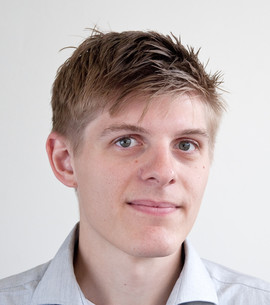What is the course about?
Course Summary
In this course, we will provide you with a basic introduction into crystallography. The focus is placed upon the symmetry elements, which occur in crystals. The arrangement of the atoms inside the crystal needs a more detailed description than the overall shape of the crystal (morphology). We want to show you how symmetry is classified in a hierarchical way. We want our students to gain the ability to discover symmetry on their own.
What will I learn?
At the end of the course you will be aware of the similarities between the patterns on wallpaper and the structures of crystals, be able to classify the innumerable appearances of crystals into the seven different crystal systems, know how to find crystallographic data and how to analyze it regarding symmetry, you will understand the International Tables for Crystallography and will be familiar with software for analyzing and drawing crystals structures.
What do I have to know?
Basic knowledge in chemistry (atoms, simple molecules).
Course Structure
| Chapter | Topic |
|---|---|
| Chapter 1 | Introduction to Crystals and Crystal Systems |
| Chapter 2 | Crystal Systems, Fractional Coordinates, and Morphology of Crystals |
| Chapter 3 | The World of Symmetry, Crystal classes and Plane groups |
| Chapter 4 | Glide planes, Screw axes and Space groups |
| Chapter 5 | Quasicrystals and Real Crystal Structures (in 3D) |
| Chapter 6 | Metal-Organic Frameworks and Networks |
| Chapter 7 | Practising Topology Determination, Tilings |
Workload
Approx. 4 hours per week.
Course instructors
Frank Hoffmann
Chemist, X-ray Crystallographer, Lecturer, Department of Chemistry, University of Hamburg
After studying Chemistry at the University of Hamburg, Germany, he received a Ph.D. degree in 2002 and held a postdoctoral position at the University of Gießen until 2007. After returning to Hamburg he became the head of the X-ray crystallography division at the Institute of Inorganic Chemistry.
He has worked for a long time on Langmuir monolayers – in particular studying chiral interactions – and Periodic Mesoporous Organosilicas (PMOs). His current research interests include crystal design, Metal-organic Frameworks (MOFs), network topology, gas storage, gas separation, molecular modeling in material science, chirality, fragrances and olfaction, and energy storage and conversion.
Michael Sartor
Chemist, Department of Chemistry, University of Hamburg (Alumnus)
Michael studied chemistry at the University of Hamburg. When the first version of "Fascination of Crystals and Symmetry" was created, he was researching metal-organic frameworks and their underlying structures. In the meantime, Michael completed his PhD and left academia. In his current work, he has no exposure to crystals anymore. However, Michael kept his fascination for tilings, patterns and symmetries that we can see in everyday life!
Revue des cours sélectionnés
Note globale 5.0 (2 d'étudiants)
Leant a lot of materials
This is a very good course for introduction to crystals systems, lattices, classes, symmetry and point groups. It introduces you to several interesting software packages all of which run on windows. I use a MAC at the moment so I could not use one of them ( TOPOS). All the videos in this course are already available (Frank Hoffmann) on YouTube. The YouTube channel allows viewers to directly write to Frank and he responds to questions accordingly.




